Stand Counts
Learn More!
NEXTA SPARK & NEXTA SHIELD
Weed of the Week
🌿Waterhemp🌿
Why it’s a problem:
Waterhemp emerges later than many other weeds, making it tricky to control. It’s also developing resistance to several herbicides and produces a huge number of seeds—meaning it spreads fast and adapts even faster.
How to identify it:
👶 Seedlings: Hairless stems and leaves
🍃 Leaves: Shiny, smooth, and lance-shaped
🌱 Stems: Reddish or green
🌾 Roots: Fibrous, no deep taproot
🌸 Seedheads: Long, slender, branching flower spikes
How to control it:
Stay ahead with regular scouting and well-timed pre- and post-emergence herbicide applications. Need help picking the right products? Give us a call—we’re here to help you tackle tough weeds! 💪🌱
#WeedOfTheWeek #Waterhemp #ScoutingSeason #CropCare #BollmeyerTips
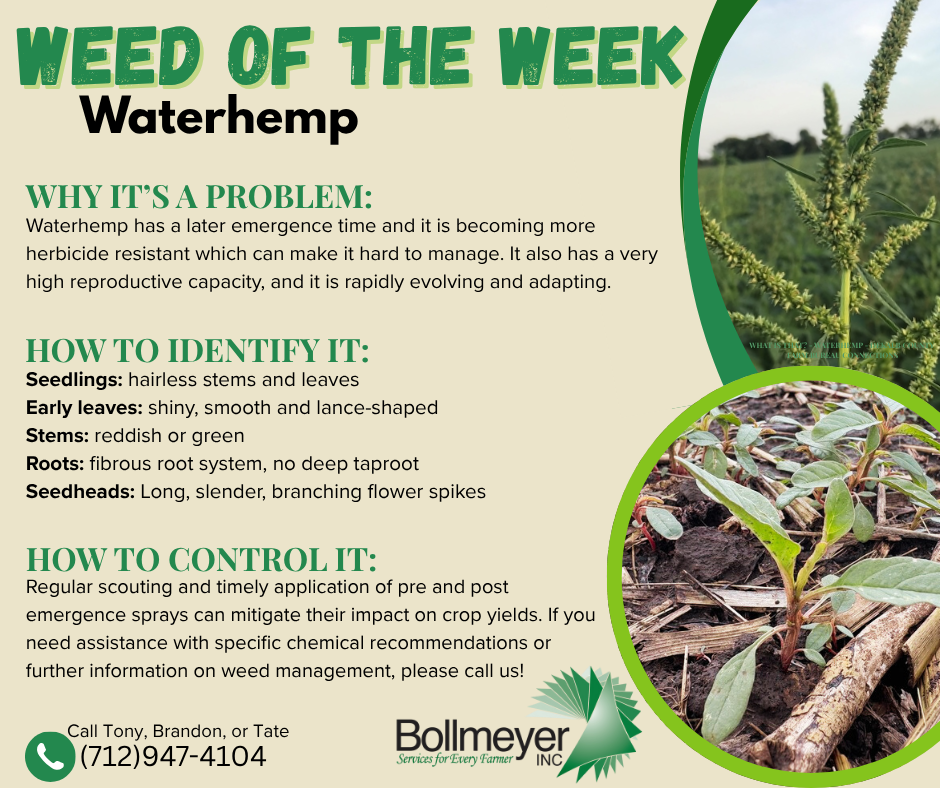
🔎🐛Alfalfa weevils are here!
Weed of the Week
WOOLLY CUPGRASS🌿
🔎How to Spot It:
-
Hairy ligule and leaves with dense, short hairs
-
Can grow 3–4 feet tall
-
Branched seed heads with two rows of seeds
-
Leaf edge often looks rippled
-
Seedlings have a large seed at the root and a short, flat first leaf
-
Mature plants grow leaves at wider angles from the stem
📢Why It Matters:
Woolly cupgrass spreads fast and can become a major problem in corn and soybean fields if not caught early.
Control Tips:
👀 Scout regularly—especially terraces and grass waterways
💦 Use targeted spraying in high-pressure spots
Stay ahead of weeds to protect your yield! 🌽🌱 #WeedOfTheWeek #ScoutingMatters #CropProtection
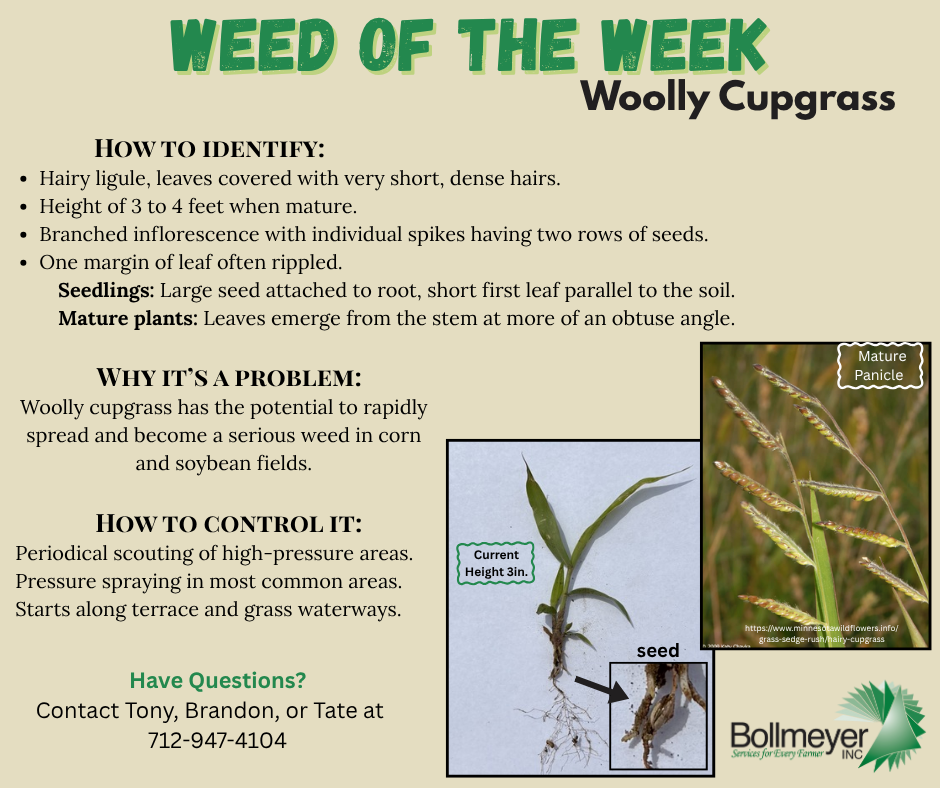
Southern Rust HAS BEEN FOUND!
Southern Rust HAS BEEN FOUND!
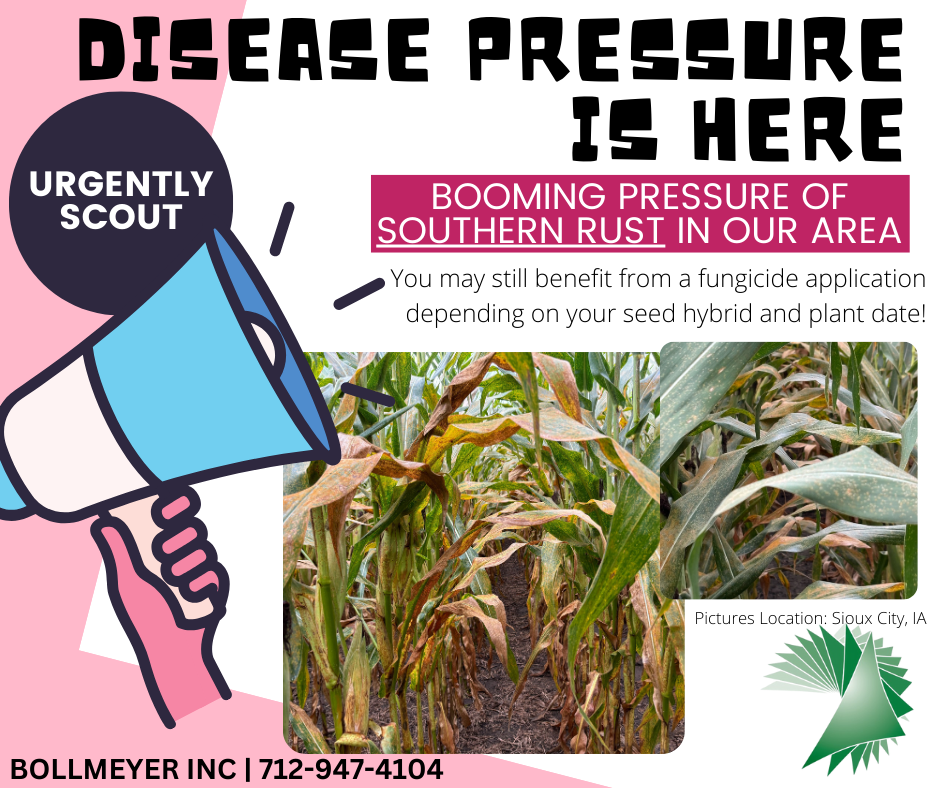
Southern Rust is a fungal disease that can seriously impact your corn yields if not managed early. Here’s what you need to know:
🔍 What to Look For:
- Orange to Reddish-Brown Pustules on the upper leaf surface.
- Yellowing & Premature Drying of leaves.
- Rapid Spread in warm, humid conditions.
💡 Impact on Your Crop:
- Reduced Photosynthesis = Less Grain Fill.
- Weakened Plants = More Susceptible to Stress.
🛡 Protect Your Fields:
- Scout Regularly: Early detection is key!
- Fungicide Application: Depending on your hybrid and your planting date, it might not be too late to benefit from!
Act fast and stay vigilant to keep your corn healthy and thriving! 🌱💪
#CornFarming #SouthernRust #CropProtection #FungalDiseases #Agriculture #FarmersAlert
Aphid Alert
APHID ALERT
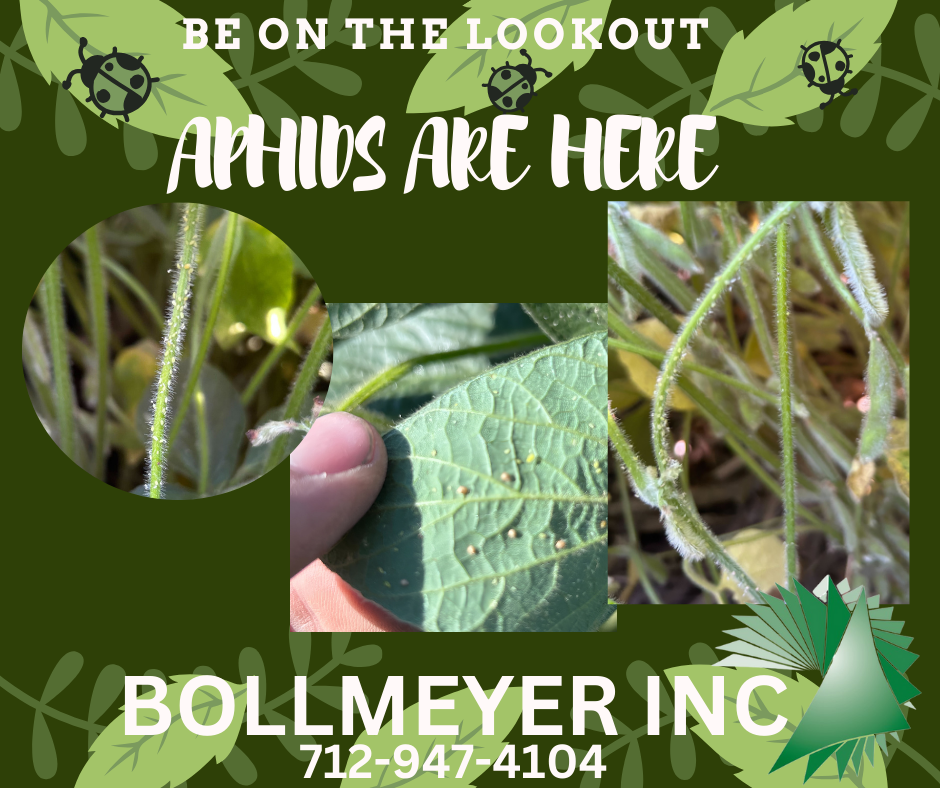
Scout, Scout, Scout
Are They Reappearing!? (Bean Leaf Beatles)
Armyworms ATTACK
Do you have PASTURES or Alfalfa Ground?
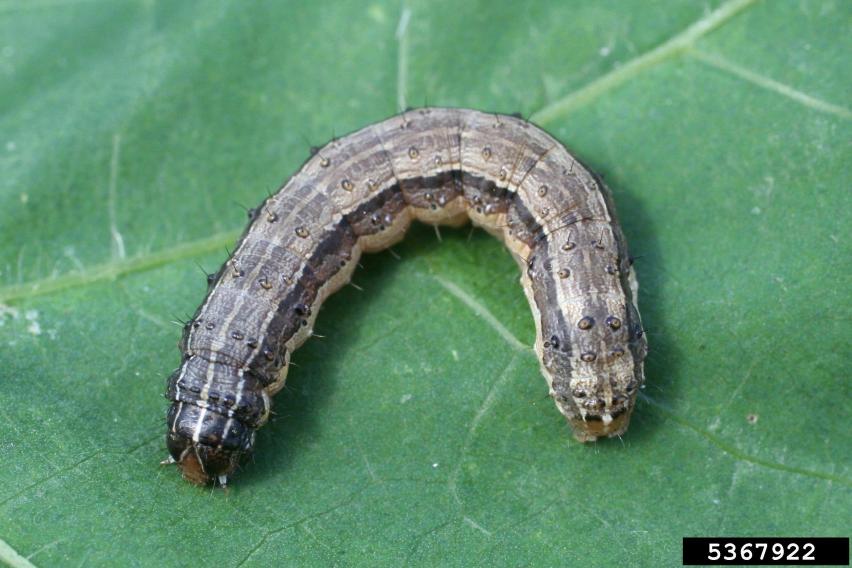
Fall Armyworm – note Y on face and four raised bumps in the shape of a square near the end of the abdomen. Photo by Russ Ottens, www.ipmimages.org/
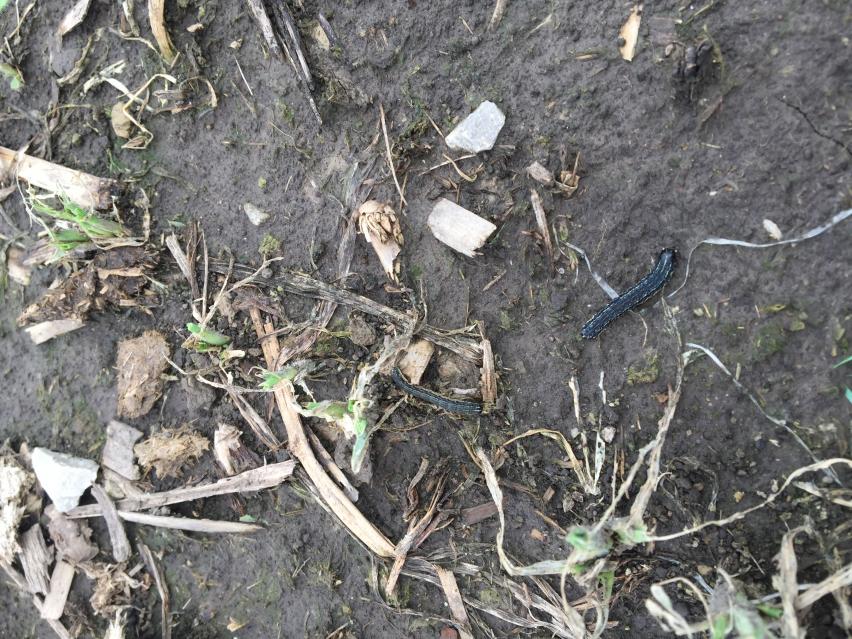
Fall Armyworms and defoliation of a cover crop. Photo by Rebecca Vittetoe.
There have been some random territories of Armyworms causing some real havoc on some producer’s pasture and alfalfa. Make sure to get out and scout your fields or give our Agronomist’s a call!
Call Tony or Gary if you have any questions or need any agronomic insights or recomendations! (712) 947-4104
Photo Credits: Iowa State University Extension and Outreach, Russ Ottens, & Rebecca Vittetoe.
Agronomy Look-Outs
Come here to view our team’s agronomist ideas, thoughts, concerns, & general info we are noticing or think you should be aware of!
Come on In!
in season : SUN-SAT
07 AM – 05 PM OR LATER
off season – mon-fri
07 AM – 05 PM
Contact
Phone
+(1) 712 947 4104
dennis@bollmeyerinc.com
Address
30585 300th ST
Hinton, IA
